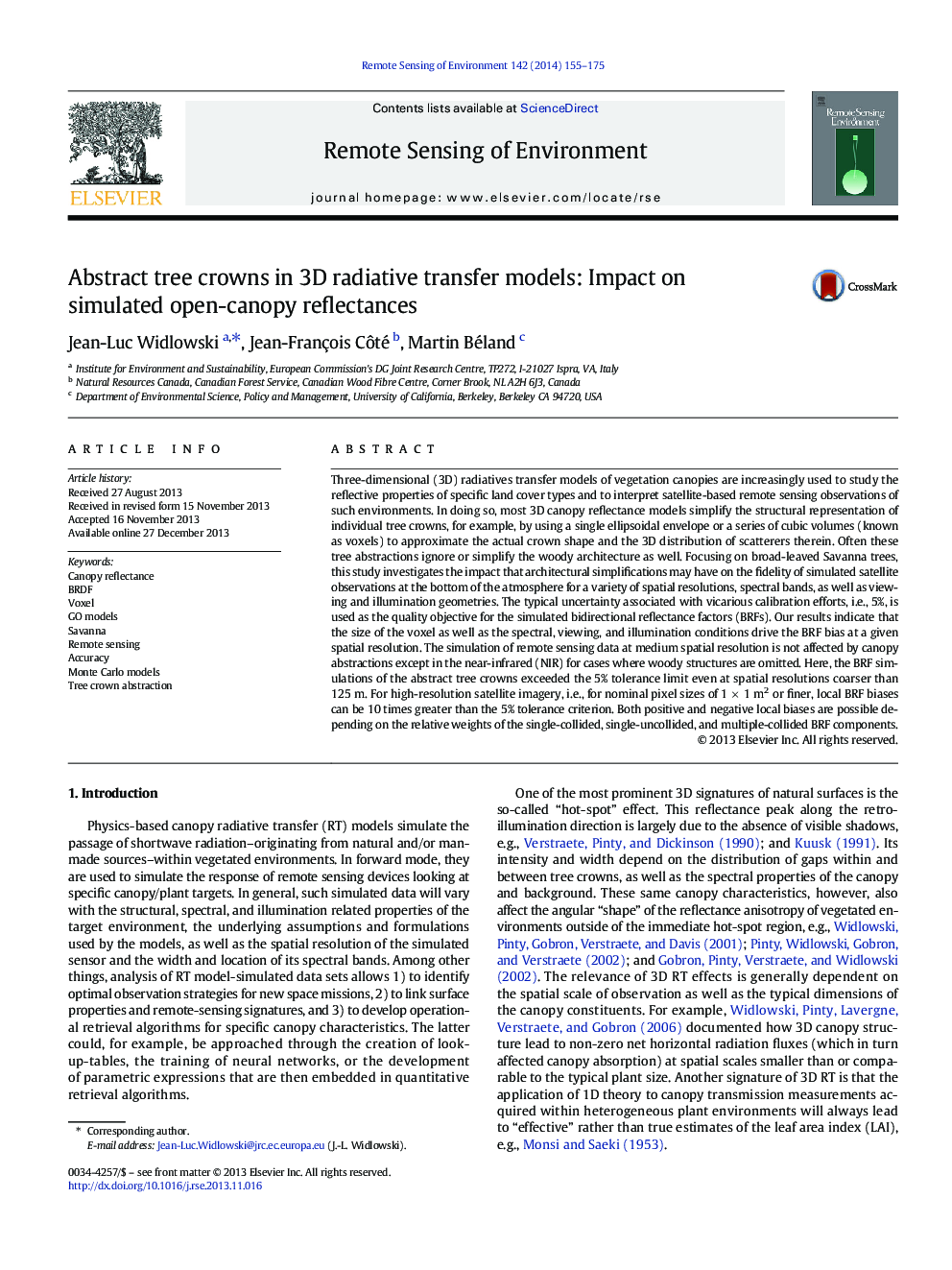| کد مقاله | کد نشریه | سال انتشار | مقاله انگلیسی | نسخه تمام متن |
|---|---|---|---|---|
| 6346952 | 1621258 | 2014 | 21 صفحه PDF | دانلود رایگان |
عنوان انگلیسی مقاله ISI
Abstract tree crowns in 3D radiative transfer models: Impact on simulated open-canopy reflectances
دانلود مقاله + سفارش ترجمه
دانلود مقاله ISI انگلیسی
رایگان برای ایرانیان
کلمات کلیدی
موضوعات مرتبط
مهندسی و علوم پایه
علوم زمین و سیارات
کامپیوتر در علوم زمین
پیش نمایش صفحه اول مقاله

چکیده انگلیسی
Three-dimensional (3D) radiatives transfer models of vegetation canopies are increasingly used to study the reflective properties of specific land cover types and to interpret satellite-based remote sensing observations of such environments. In doing so, most 3D canopy reflectance models simplify the structural representation of individual tree crowns, for example, by using a single ellipsoidal envelope or a series of cubic volumes (known as voxels) to approximate the actual crown shape and the 3D distribution of scatterers therein. Often these tree abstractions ignore or simplify the woody architecture as well. Focusing on broad-leaved Savanna trees, this study investigates the impact that architectural simplifications may have on the fidelity of simulated satellite observations at the bottom of the atmosphere for a variety of spatial resolutions, spectral bands, as well as viewing and illumination geometries. The typical uncertainty associated with vicarious calibration efforts, i.e., 5%, is used as the quality objective for the simulated bidirectional reflectance factors (BRFs). Our results indicate that the size of the voxel as well as the spectral, viewing, and illumination conditions drive the BRF bias at a given spatial resolution. The simulation of remote sensing data at medium spatial resolution is not affected by canopy abstractions except in the near-infrared (NIR) for cases where woody structures are omitted. Here, the BRF simulations of the abstract tree crowns exceeded the 5% tolerance limit even at spatial resolutions coarser than 125Â m. For high-resolution satellite imagery, i.e., for nominal pixel sizes of 1Â ÃÂ 1Â m2 or finer, local BRF biases can be 10 times greater than the 5% tolerance criterion. Both positive and negative local biases are possible depending on the relative weights of the single-collided, single-uncollided, and multiple-collided BRF components.
ناشر
Database: Elsevier - ScienceDirect (ساینس دایرکت)
Journal: Remote Sensing of Environment - Volume 142, 25 February 2014, Pages 155-175
Journal: Remote Sensing of Environment - Volume 142, 25 February 2014, Pages 155-175
نویسندگان
Jean-Luc Widlowski, Jean-François Côté, Martin Béland,